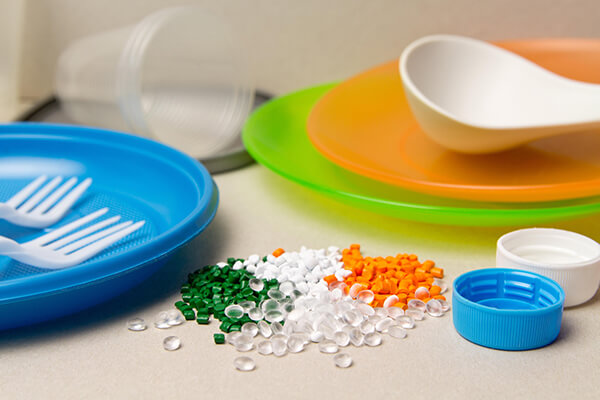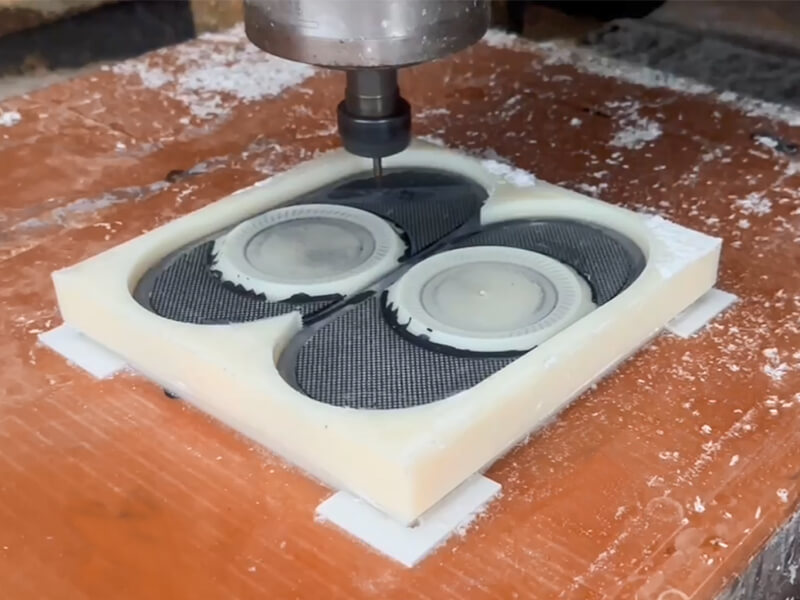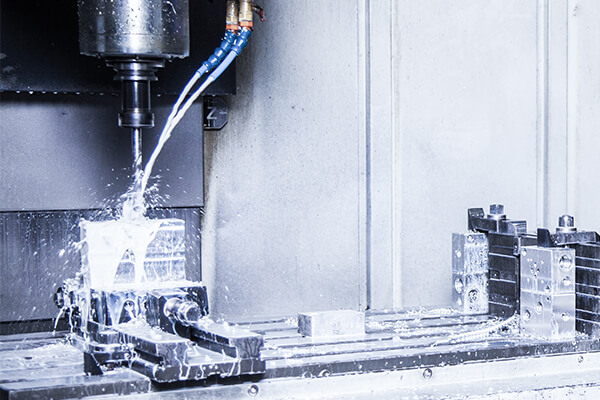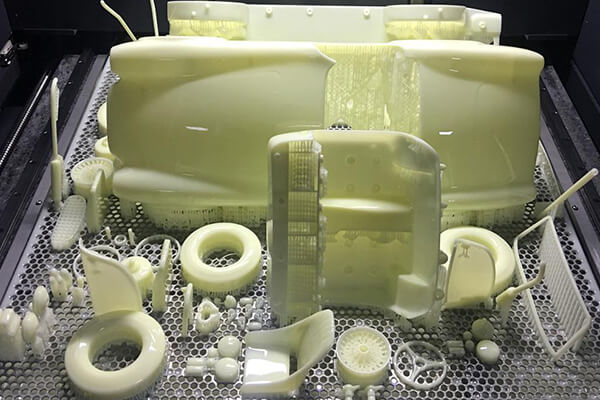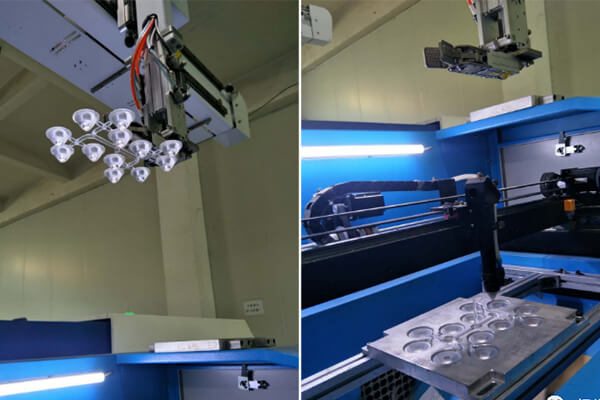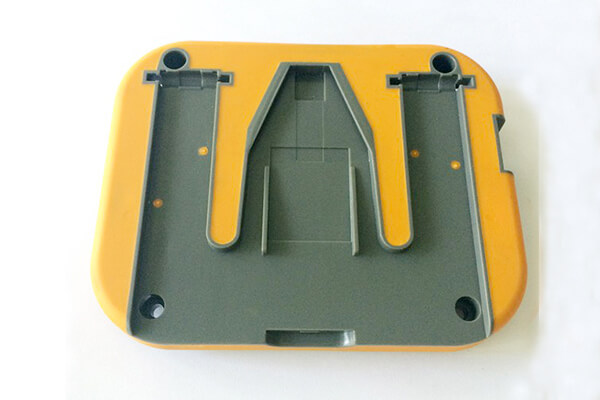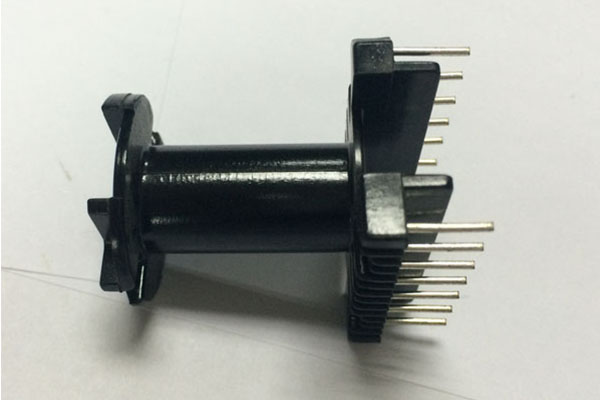Methods of Custom Plastic Products and Parts
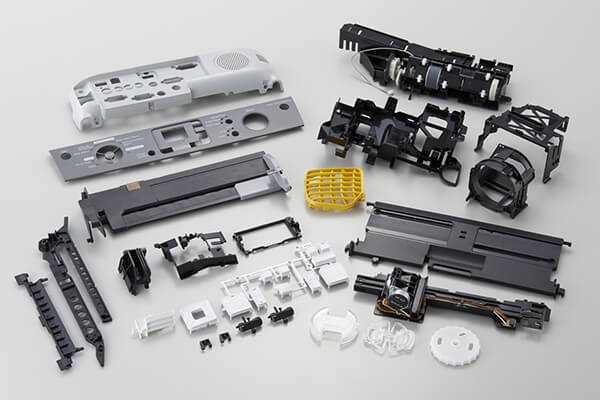
While plastic products offer many advantages, such as light weight and moisture resistance, they also present environmental challenges. Plastic waste can take hundreds of years to decompose, causing pollution and harming wildlife and ecosystems. As a result, there is an increasing focus on recycling and finding more sustainable alternatives to reduce plastic waste and its impact on the environment.
Common Plastic Materials
There are several types of plastic materials commonly used in manufacturing, each with its own unique properties and characteristics. Here are some of the most commonly used types of plastics:
- Polyethylene (PE): Polyethylene is a versatile plastic that is lightweight, durable, and resistant to moisture. It is commonly used in packaging materials, bottles, plastic bags, and toys.
- Polypropylene (PP): Polypropylene is a tough and rigid plastic that can withstand high temperatures. It is used in a wide range of applications, including food containers, automotive parts, and textiles.
- Polyvinyl Chloride (PVC): PVC is a durable and versatile plastic that can be rigid or flexible. It is commonly used in pipes, electrical cables, window frames, and flooring.
- Polystyrene (PS): Polystyrene is a lightweight and rigid plastic that is often used in packaging materials, disposable cutlery, insulation, and foam products like Styrofoam.
- Polyethylene Terephthalate (PET): PET is a clear and strong plastic commonly used in beverage bottles, food containers, and synthetic fibers for clothing.
- Acrylonitrile Butadiene Styrene (ABS): ABS is a strong and impact-resistant plastic that is used in a variety of applications, including electronics, automotive parts, and toys.
- Polycarbonate (PC): Polycarbonate is a transparent and durable plastic known for its high impact resistance. It is used in products such as safety goggles, bulletproof glass, and electronic components.
- Polyurethane (PU): Polyurethane is a versatile plastic that can be rigid or flexible, and it has excellent abrasion resistance. It is used in furniture, insulation, footwear, and adhesives.
- Nylon: Nylon is a strong and lightweight plastic that is commonly used in textiles, ropes, and engineering components like gears and bearings.
These are just a few examples of the many types of plastic materials available, each with its own unique properties and applications. It’s important to note that not all plastics are recyclable, and proper disposal and recycling practices should be followed to mitigate their environmental impact.
Sungplastic offers a variety of material options, you can choose the most suitable plastic material for your product.

Applications of Plastic Products
Plastic products are used in a wide range of applications across various industries. Their versatility, durability, and cost-effectiveness make them suitable for numerous purposes. Here are some common applications of plastic products:
- Packaging: Bottles, Containers, Films, Bags and Wraps.
- Construction: PVC pipes and fittings, Plastic sheets and panels, Flooring, Windows, Doors and Other building components.
- Automotive: Bumpers, Interior trims, Dashboards, Door panels, Seats and Electrical components.
- Electronics: Casings, Connectors, Circuit boards, Insulation and Packaging.
- Medical and Healthcare: Syringes, IV bags, Surgical instruments, Medical devices, Packaging for pharmaceuticals and Personal protective equipment (PPE).
- Consumer Goods: Toys, Kitchenware, Household appliances, Furniture, Sports equipment and Personal care products.
- Agriculture: Greenhouse films, Irrigation systems, Mulch films, Seedling trays and Packaging.
- Packaging and Transportation: Pallets, Crates, Drums, Containers and Straps.
- Sports and Recreation: Balls, Helmets, Protective gear, Athletic shoes, Swimming goggles and Gym equipment.
These are just a few examples of the wide-ranging applications of plastic products. The versatility and adaptability of plastics make them indispensable in numerous industries, contributing to our modern way of life.
The methods to make plastic product
There are several common methods of manufacturing plastic products such as injection molding, blow molding, overmolding, insert molding, and more. Each method has its own advantages and disadvantages and is suitable for different applications. Manufacturers should choose the most suitable method according to the characteristics of the product. Sungplastic is an experienced and reputable manufacturer of plastic products, we offer a wide range of plastic materials and have a complete plastic molding and manufacturing system. In short, we provide one-stop service for custom plastic products and further help you with our expertise. The following is a detailed introduction of the different processes:
Prototyping
Prototyping involves creating a preliminary version or a scaled-down model of a product to test its design, functionality, and manufacturability before mass production. Various techniques can be used for prototyping plastic products, including 3D printing, CNC machining, and manual fabrication methods.
Prototyping in Low-volume Production
The relationship between prototyping and low-volume production is one of continuity and improvement. Prototyping serves as a crucial step in the product development process, providing insights and refinement opportunities that inform and enhance low-volume production.
- Iterative Development: Prototyping allows for an iterative approach to product development, where multiple iterations of the design are created and tested. Each prototype helps identify and address design flaws, functionality issues, and improvements. Once the final prototype is validated and refined, it can serve as the basis for small batch production.
- Design Refinement: Prototyping facilitates the refinement of the product design based on feedback and testing. Small batch production builds upon the refined design, incorporating the lessons learned during the prototyping phase. By using the final prototype as a reference, the production process can be optimized for small batch production, ensuring consistent quality and reducing the likelihood of design-related issues.
- Tooling and Manufacturing Optimization: Prototyping helps identify and address manufacturing challenges early on. By creating prototypes, manufacturers can assess the feasibility of the design, evaluate manufacturing processes, and optimize tooling requirements. The knowledge gained during prototyping can be leveraged to streamline the small batch production process, minimize production issues, and maximize manufacturing efficiency.
- Quality Assurance: Prototyping allows for rigorous testing and validation of the product design, helping to identify and resolve quality-related issues. This knowledge can be applied to small batch production to ensure consistent quality control measures are in place.
- Cost Efficiency: Prototyping helps mitigate the risk of costly mistakes during small batch production. By identifying and resolving design flaws early on, prototyping helps reduce the likelihood of expensive rework or production delays.
Prototyping Methods
There are various methods of prototyping available, each with its own advantages and suitability for different stages of the product development process. Here are some common methods of prototyping:
- Manual Prototyping: Manual prototyping is quick, low-cost, and allows for rapid exploration of design concepts. It is most commonly used in the early stages of product development to visualize and communicate ideas.
- 3D Printing: 3D printing offers high precision, complexity, and customization capabilities. 3D printing is widely used for creating functional prototypes, testing form and fit, and producing small batches of parts with various plastic or metal materials.
- CNC Machining: CNC machining offers high precision and can produce prototypes from a wide range of materials, including plastics, metals, and composites. It is suitable for creating functional prototypes and producing parts with complex geometries.
- Rapid Prototyping: Rapid prototyping allows for faster iteration and validation of designs. Rapid prototyping is often used when time is critical, and multiple iterations need to be created within a short timeframe.
- Silicone Molding: Silicone molding involves creating a mold from a prototype and then casting replicas using liquid silicone. It is commonly used for prototyping parts that will eventually be manufactured through injection molding.
- Virtual Prototyping: Virtual prototyping allows for testing and validating the product in a virtual environment, including evaluating functionality, ergonomics, and performance. Virtual prototyping is particularly useful for complex systems or when physical prototypes are costly or time-consuming to produce.
- Hybrid Prototyping: Hybrid prototyping combines multiple prototyping methods to leverage their respective strengths. Hybrid prototyping allows for a more comprehensive approach to prototyping, taking advantage of different techniques at different stages of the development process.
The choice of prototyping method depends on factors such as the stage of development, desired level of detail and functionality, available resources, time constraints, and budget. It is common for multiple prototyping methods to be used throughout the product development cycle to achieve the best results.
CNC Machining
CNC Machining: Computer Numerical Control (CNC) machining is a subtractive manufacturing process used to create precise plastic parts. It involves programming a computer-controlled machine to remove material from a solid block or sheet of plastic to form the desired shape. CNC machining offers high accuracy, tight tolerances, and the ability to work with a wide range of plastic materials.
CNC Machining in Low-volume Manufacturing
CNC machining and low volume manufacturing are closely related, and CNC machining is often used as a manufacturing method for producing low volumes of parts or products. Here’s an introduction of their relationship:
- CNC Machining for Low Volume Manufacturing: CNC machining is well-suited for low volume manufacturing due to its flexibility, precision, and relatively shorter setup times compared to traditional manufacturing processes like molding or casting. It allows for efficient production of small batches of parts without the need for expensive tooling or molds.
- Quick Setup and Changeover: CNC machining offers relatively quick setup and changeover times, making it ideal for low volume manufacturing. Once programmed and set up, the machine can produce parts with high accuracy and repeatability.
- Wide Material Compatibility: CNC machining can work with a wide range of materials, including various plastics, metals, and composites. This versatility makes it suitable for low volume manufacturing across different industries and applications. Manufacturers can choose the appropriate material based on the specific requirements of the parts or products being produced.
- Cost-Effective for Low Volumes: CNC machining offers cost advantages for low volume manufacturing compared to traditional manufacturing methods that require expensive tooling or molds.
- Design Flexibility: CNC machining allows for complex geometries, intricate details, and tight tolerances. This design flexibility is beneficial for low volume manufacturing, as it enables the production of customized or highly specific parts.
CNC Machining in Plastic Prototyping
CNC machining is a versatile and precise method for plastic prototyping. Its ability to work with various plastic materials, create complex geometries, and support iterative development makes it a popular choice for producing functional and visually appealing plastic prototypes efficiently. Here are some key points regarding the use of CNC machining in plastic prototyping:
- Material Compatibility: CNC machining can work with a variety of plastic materials, including ABS, polycarbonate (PC), polypropylene (PP), acrylic, nylon, and more.
- High Precision: CNC machines offer excellent precision and accuracy, making them capable of creating intricate and detailed plastic prototypes.
- Complex Geometries: CNC machining is adept at producing parts with complex shapes, internal features, undercuts, and fine details.
- Rapid Turnaround: CNC machining offers relatively quick turnaround times for plastic prototyping. Once the CNC program is created and the machine is set up, the production process can commence promptly.
- Iterative Development: CNC machining supports an iterative approach to plastic prototyping. Design modifications can be made based on feedback and testing results, and new iterations can be produced rapidly.
- Surface Finish: CNC-machined plastic parts typically have a smooth surface finish, especially when using high-quality cutting tools and appropriate machining strategies.
- Design Considerations: When using CNC machining for plastic prototyping, it’s important to consider design aspects such as wall thickness, draft angles, and feature sizes. These considerations help ensure manufacturability, minimize material waste, and optimize the overall strength and functionality of the plastic prototype.
3D Printing
3D Printing (Additive Manufacturing): 3D printing, also known as additive manufacturing, is a process that builds plastic products layer by layer from a digital design file. It involves depositing or curing successive layers of plastic material to create a three-dimensional object. 3D printing is highly versatile, allowing for complex geometries, customization, and rapid prototyping.
Advantages of 3D Printing
- Cost-Effective for Low Volumes: 3D printing is cost-effective for producing low volumes of parts or products. This makes it suitable for small batch production or customized products without the need for large-scale manufacturing setups.
- Design Freedom: 3D printing allows for the creation of complex geometries and intricate designs that may be challenging or impossible to achieve with traditional manufacturing methods.
- Rapid Prototyping: 3D printing enables the quick turnaround of prototypes, allowing for faster iterations and design validation. It reduces the time and cost associated with traditional prototyping methods, such as CNC machining or injection molding.
- Material Versatility: 3D printing supports a wide range of materials, including various plastics, metals, ceramics, and even composites. This versatility allows for the selection of materials that match the specific requirements of the application, such as strength, flexibility, heat resistance, or transparency.
- Reduced Material Waste: 3D printing is an additive manufacturing process, which means that it adds material layer by layer to create the final part. This approach minimizes material waste compared to subtractive manufacturing methods like CNC machining, where excess material is removed.
Disadvantages of 3D Printing
- Limited Production Speed: 3D printing can be relatively slow compared to traditional manufacturing methods, especially when producing larger or more complex parts. The layer-by-layer printing process takes time, and the overall production speed may not be suitable for high-volume production requirements.
- Surface Finish and Resolution: Depending on the 3D printing technology and parameters used, the surface finish of 3D-printed parts may not be as smooth as those produced by other manufacturing methods. Additionally, the resolution or level of detail achievable may be limited, resulting in visible layer lines or reduced accuracy for intricate features.
- Quality and Consistency: Achieving consistent quality and repeatability in 3D printing can be challenging, particularly with desktop or consumer-grade printers. Factors such as printer calibration, material variations, and print settings can affect the quality and reliability of the printed parts.
Injection Molding
This is one of the most widely used methods. Molten plastic is injected into a mold cavity under high pressure. Once the plastic cools and solidifies, the mold is opened, and the final product is ejected. It’s suitable for producing a wide range of products, from small components to larger items.
Injection Molding in High-volume Production
In high-volume production, injection molding is used to manufacture large quantities of identical parts efficiently and cost-effectively. The process is optimized for speed, consistency, and economies of scale. Here’s how it’s applied:
- Mold Design and Fabrication: The process begins with designing and fabricating the injection molds. These molds are precision-engineered to create the desired product shape and features. The upfront tooling costs can be significant but are justified by the large production volume.
- Mass Production: Once the molds are ready, the injection molding machines are set up for mass production. Molten plastic material is injected into the mold cavities under high pressure. The mold is then cooled, and the solidified plastic parts are ejected.
- Automation: High-volume injection molding is often highly automated. Robots can handle tasks like loading and unloading molds, quality inspection, and packaging. Automation ensures consistent production and reduces labor costs.
- Quality Control: Stringent quality control measures are in place to ensure that the produced parts meet the required specifications. Any defects or variations are detected and addressed promptly to maintain product consistency.
- Efficiency and Speed: The focus is on producing as many parts as quickly as possible without sacrificing quality. The cycle times for injection molding are relatively short, enabling rapid production.
- Cost-Effectiveness: Injection molding’s cost-effectiveness becomes more apparent as the production volume increases. The tooling costs are spread across a large number of parts, leading to a lower per-unit cost.
Injection Molding in On-demond Manufacturing
In on-demand manufacturing, injection molding is used for smaller-scale production, rapid prototyping, customization, and addressing specialized needs. Flexibility and responsiveness are key in this context. Here’s how it’s applied:
- Rapid Prototyping: Injection molding is used for creating functional prototypes and small batches of parts quickly. This allows designers and engineers to test their designs, validate concepts, and make improvements before committing to mass production.
- Customization: Injection molding can be used to produce customized parts tailored to specific requirements. The molds can be modified or created using techniques like 3D printing, allowing for small production runs of unique parts.
- Bridge Tooling: When transitioning from prototyping to mass production, bridge tooling involves creating a limited number of molds for a small batch of parts. This helps bridge the gap between prototyping and large-scale production.
- Replacement Parts: Injection molding can be employed to manufacture replacement parts for products that are no longer in mass production, extending the lifespan of products and reducing waste.
- Niche Markets: In niche markets or for specialized applications, on-demand injection molding can be used to create parts that cater to specific needs, even if the production volume is relatively low.
- Cost-Effective Small Batches: Modern techniques like rapid tooling and 3D-printed molds have made small-batch injection molding more economically viable, allowing manufacturers to produce smaller quantities without incurring exorbitant tooling costs.
Overmolding
Overmolding is a process in which a plastic product is created by molding one material (usually a soft or elastomeric material) over another (usually a rigid plastic or metal). The overmolding process creates a strong bond between the two materials, resulting in a single integrated component with enhanced functionality and aesthetics. It provides additional functionality, improved grip, or aesthetic appeal. Overmolding is commonly used in the production of handles, grips, and complex parts with multiple materials.
Steps in the Overmolding Process
- Preparing the Base Material: The initial step involves preparing the base material or substrate, which can be a pre-molded part or an insert. The base material should have the necessary design features and be compatible with the overmolding material.
- Injection Molding the First Material: The first material, often referred to as the substrate or core, is injection molded to create the initial shape. This material is typically a rigid plastic, but it can also be metal or other materials.
- Preparing the Second Material: Once the first material has cooled and solidified, the surface is prepared for the overmolding process. This may involve cleaning, applying adhesion-promoting agents, or other surface treatments to ensure proper bonding with the second material.
- Injection Molding the Second Material: The second material, usually a softer or more flexible plastic, is injected over the first material. The second material bonds with the first material, forming a cohesive and integrated part.
Advantages of Overmolding
- Improved Ergonomics: Overmolding allows for the addition of soft-touch or ergonomic grips, enhancing user comfort and improving the overall feel of the product.
- Enhanced Functionality: Overmolding enables the integration of multiple materials with different properties into a single part. This can add functionalities such as sealing, insulation, vibration dampening, or impact resistance.
- Aesthetic Appeal: Overmolding allows for the creation of visually appealing products by combining different colors or textures in a single part. This can enhance brand identity, product differentiation, and overall aesthetics.
- Improved Durability: The combination of different materials in the overmolding process can enhance the durability and strength of the final part. The rigid substrate provides structural integrity, while the overmolded material can provide protection, shock absorption, or wear resistance.
- Cost Savings: Overmolding can reduce assembly and manufacturing costs by eliminating the need for separate components and assembly processes. It can also reduce the need for secondary operations such as adhesive bonding or mechanical fastening.
Insert Molding
Insert molding is a manufacturing process similar to overmolding. It is a technique that combines plastic molding with the integration of pre-formed components or inserts, such as metal parts or electronics. Insert molding finds applications in various industries, including automotive, electronics, medical devices, consumer goods, and more. It offers the advantage of combining different materials and components into a single part, resulting in improved functionality, durability, and design possibilities.
Steps in the Insert Injection Molding Process
- Insert Preparation: The first step involves preparing the inserts or substrates that will be placed into the mold cavity. These inserts can be made of various materials, such as metal, plastic, or even pre-molded parts.
- Insert Placement: The prepared inserts are carefully positioned or placed into the mold cavity in a predetermined orientation or location. Fixtures or automation may be used to ensure precise placement of the inserts.
- Mold Clamping: The mold, consisting of two or more halves, is closed and clamped securely to prevent any leakage during the injection process.
- Injection Molding: Molten material, typically a thermoplastic, is injected into the mold cavity around the inserted substrate. The material fills the space between the insert and the mold walls, encapsulating the insert and forming the final part.
- Cooling and Solidification: The injected material is allowed to cool and solidify inside the mold, ensuring that the part retains its shape and the insert is securely bonded with the surrounding material.
- Mold Opening and Part Ejection: Once the part has solidified, the mold is opened, and the completed part is ejected from the mold cavity. Any excess material or flash is trimmed or removed as necessary.
Advantages of Insert Molding
- Enhanced Strength and Stability: Insert molding creates a strong bond between the substrate insert and the molded material, resulting in enhanced strength and stability of the final part. The insert can provide structural support or reinforcement, especially when made of metal or other high-strength materials.
- Increased Design Flexibility: Insert molding allows for the integration of different materials and components into a single part, expanding design possibilities. Inserts can be used to incorporate features such as threaded inserts, electrical contacts, connectors, or other functional elements.
- Streamlined Manufacturing: By combining multiple manufacturing steps into a single process, insert molding can streamline production, reduce assembly time, and minimize the need for additional post-molding operations. This can result in cost savings and improved efficiency.
- Improved Product Quality: Insert molding can help eliminate or reduce issues associated with component misalignment, loosening, or part-to-part variation. The encapsulation of inserts provides a secure and consistent connection, contributing to improved product quality and reliability.
Extrusion
Extrusion is a manufacturing process used to create objects with a fixed cross-sectional shape by pushing or forcing materials through a die. The process involves heating the material until it reaches a molten or viscous state, then forcing it through a die to form a continuous profile with a consistent cross-section. Extrusion is commonly used to produce products such as pipes, tubes, rods, and profiles made from materials like plastic, metal, rubber, and even food. However, there are some considerations with extrusion. The initial investment in extrusion equipment and tooling can be significant, and certain materials may not be suitable for extrusion due to their properties or compatibility with the process. The surface finish of extruded profiles may also require additional post-processing steps for specific applications.
Blow Molding
Blow molding is a manufacturing process used to produce hollow plastic objects, such as bottles, containers, and tanks. It involves melting plastic material and then inflating a hollow tube called a parison within a mold cavity. The parison takes the shape of the mold as compressed air is blown into it, forming the final product. Blow molding offers advantages such as high production efficiency, cost-effectiveness, and the ability to create complex shapes. It is widely used in industries such as packaging, automotive, and consumer goods due to its capability to produce lightweight and durable plastic containers.
Rotational Molding (Rotomolding)
Rotational molding, also known as rotomolding, is a manufacturing process used to create hollow plastic objects. It involves rotating a mold containing powdered or liquid plastic material in a specialized oven. As the mold rotates, the plastic evenly coats the interior, gradually melting and adhering to the mold’s shape. After cooling, the mold is opened, and the finished product is removed. Rotomolding offers advantages such as design flexibility, low-cost tooling, and the ability to produce large, seamless, and complex parts. It is commonly used for manufacturing items like tanks, containers, playground equipment, and automotive components.
Compression Molding
Compression molding is a manufacturing process used to shape and form thermosetting materials into various products. It involves placing a pre-measured amount of material, such as powdered or granular thermosetting plastic, into a heated mold cavity. The mold is then closed, and pressure is applied to compress the material, causing it to flow and conform to the mold’s shape. The material is then cured under heat and pressure, resulting in a solid and durable product. Compression molding is commonly used for producing items such as automotive parts, electrical components, and household appliances due to its ability to create complex shapes and maintain dimensional accuracy.
Thermoforming
Thermoforming is a manufacturing process used to shape thermoplastic sheets into various products. It involves heating a thermoplastic sheet until it becomes pliable, then draping or vacuum-forming it over a mold to achieve the desired shape. The sheet is cooled, solidifying the product, and it is then trimmed and finished. Thermoforming offers advantages such as cost-effectiveness, fast production cycles, and the ability to produce large, lightweight, and intricate parts. It is widely used in industries such as packaging, automotive, and consumer goods for items like trays, containers, displays, and interior components due to its versatility and efficient production capabilities.
Injection Blow Molding
Injection blow molding is a manufacturing process used to create hollow plastic objects, typically bottles and containers. It combines elements of injection molding and blow molding. Initially, a preform is produced using injection molding, where molten plastic is injected into a mold cavity to create a tube-like shape called a preform. The preform is then transferred to a blow molding machine, where it is reheated and inflated with compressed air inside a mold to form the final product. Injection blow molding offers advantages such as precise control over wall thickness, consistent neck finish, and high production efficiency. It is commonly used for producing small to medium-sized containers with complex shapes and high-quality finishes.
Transfer Molding
Transfer molding is a manufacturing process used to create intricate and precise molded parts, particularly with thermosetting materials. It is a variation of compression molding that employs a closed mold and a plunger system. In transfer molding, the pre-measured thermosetting material is placed into a chamber called the pot. The pot is then heated, causing the material to soften and become flowable. A plunger forces the material from the pot into the mold cavity through channels called runners and gates. The material solidifies under heat and pressure, resulting in the final molded part. Transfer molding offers advantages like reduced flash, improved dimensional control, and the ability to mold complex shapes with minimal waste. It is commonly used in industries such as electronics, automotive, and aerospace.
Reaction Injection Molding (RIM)
Reaction Injection Molding (RIM) is a manufacturing process used to produce complex and lightweight plastic parts. It involves the mixing and reaction of two or more liquid components, typically polyurethane or epoxy, in a mixing head. The mixed material is then injected into a closed mold cavity, where it undergoes a chemical reaction and solidifies into the desired shape. RIM offers advantages such as low-cost tooling, fast production cycles, and the ability to create large and durable parts with intricate details. It is commonly used in industries such as automotive, electronics, and furniture manufacturing for producing components with high strength-to-weight ratios and excellent surface finishes.
Composite Fabrication
Composite fabrication refers to the process of creating composite materials by combining two or more different materials to form a stronger and more lightweight final product. Composites typically involve a matrix material, such as resin, reinforced with fibers or particles, such as carbon fibers, glass fibers, or aramid fibers. The fabrication process involves various techniques like hand lay-up, filament winding, pultrusion, or autoclave molding, depending on the specific application and desired properties. Composite fabrication offers advantages such as high strength-to-weight ratio, corrosion resistance, and design flexibility, making it commonly used in industries such as aerospace, automotive, marine, and construction for manufacturing components ranging from aircraft parts to sporting goods.
The Future Development of Plastic Products
The future development of plastic products is focused on addressing the environmental concerns associated with traditional plastic products and exploring more sustainable alternatives. Here are some key areas of development in the plastic products industry:
- Biodegradable and compostable plastics: Researchers and manufacturers are working on developing plastic products that can biodegrade more rapidly in natural environments or be composted under specific conditions. These biodegradable and compostable plastic products aim to reduce the persistence of plastic waste and minimize environmental impact.
- Bio-based plastics: Bio-based plastic products are derived from renewable resources such as plants, algae, or bacteria. These plastic products offer the potential to reduce reliance on fossil fuels and have a lower carbon footprint compared to traditional plastic products.
- Recycled plastics: There is increasing emphasis on the recycling of plastic materials to minimize waste and conserve resources. The goal is to create a circular economy where plastic waste is recycled into new products.
- Alternatives to single-use plastics: Single-use plastics, such as plastic bags, cutlery, and straws, contribute significantly to plastic waste. The future of plastic products involves finding viable alternatives to these items.
- Innovative design and materials: The plastics industry is exploring new materials and innovative product designs to reduce the amount of plastic used or increase its recyclability. Sungplastic optimizes the performance of plastic products and increases the recycling rate of plastic products through lightweight technology, combining recycled materials, and utilizing multi-layer materials with different characteristics.
- Consumer education and behavior change: Increased awareness about the environmental impact of plastic products can drive demand for sustainable alternatives and encourage responsible consumption and waste management practices.
It’s important to note that the development of sustainable plastic alternatives and practices requires collaboration among various stakeholders, including industries, researchers, policymakers, and consumers. By embracing innovative solutions and adopting more sustainable practices, the future of plastic products can be more environmentally friendly and contribute to a more sustainable future.
Choose an Experienced Plastic products manufacturer-Sungplastic
Sungplastic is a plastic products manufacturer with 20 years of manufacturing experience and good reputation. It mainly provides plastic customization services and engages in precision processing of customized plastic products. We have a team of skilled employees, a wide range of plastic materials and a complete set of injection molding equipment to meet customers’ various customization needs. In the process of manufacturing plastic products, we put environmental protection in the first place, the following are the measures we have taken to protect the environment:
- Sustainable Material Use: Sungplastic chooses degradable, recyclable and reusable plastic materials to reduce long-term impact on the environment. Develop biodegradable plastics or use recyclable plastics such as PET, HDPE, etc.
- Product Design Optimization: Designing products to minimize material usage and waste of resources. Sungplastic adopts lightweight design and optimized packaging methods to reduce the amount of plastic used.
- Production Process Improvement: Optimizing production processes to reduce waste, energy consumption and emissions. Sungplastic adopts clean production technology to minimize environmental burden.
- Recycling and Recycling: Sungplastic collects and recycles waste plastic products through the establishment of a recycling system to promote the recycling of plastics, transform waste plastics into new products, and reduce resource consumption.
- Environmental Education and Publicity: Sungplastic regularly promotes environmental protection awareness to employees, customers and the society, encourages the reduction of single-use plastic products, and advocates an environmentally friendly lifestyle.
- Investment in Research and Development: Sungplastic invests heavily in research and development of innovative technologies, such as bioplastics, degradable plastics, plastic recycling technology, etc., to promote the sustainable development of the plastics industry.
- Compliance and Regulatory Compliance: Sungplastic complies with relevant environmental laws and regulations to ensure compliance in the production and use of plastic products and avoid adverse impacts on the environment.
- Ecological Compensation: Sungplastic actively organizes employees to participate in the ecological restoration plan, and compensates the impact of plastic products on the ecological environment through afforestation and wetland protection.
Sungplastic’s plastic products production system is more in line with the future development trend and is the right choice for you to customize plastic products. If you are looking for a custom plastic products manufacturer or need a custom plastic products service provider, please contact us now, our professionals will answer you all the time.
About Sungplastic
Sungplastic is a plastic product manufacturer with rich experience in injection molding. According to the different product development requirements, we flexibly adjust the manufacturing process to achieve high quality, high efficiency and more economical.
We offer a variety of manufacturing services: Rapid Prototyping, Tool Making, Injection Molding, Product Design and Development, CNC Machining and Metal Stamping. You can choose from a variety of plastics, silicone rubber, or metal for your product. Regardless of mass production or small batch customization, Sungplastic has always been committed to providing assured, efficient and more economical one-stop processing services for your projects.
Contact us for a free quote and project review.
Get a free quote and design analysis today.
We’ll reply you within 6 working hours. We respect your privacy.

